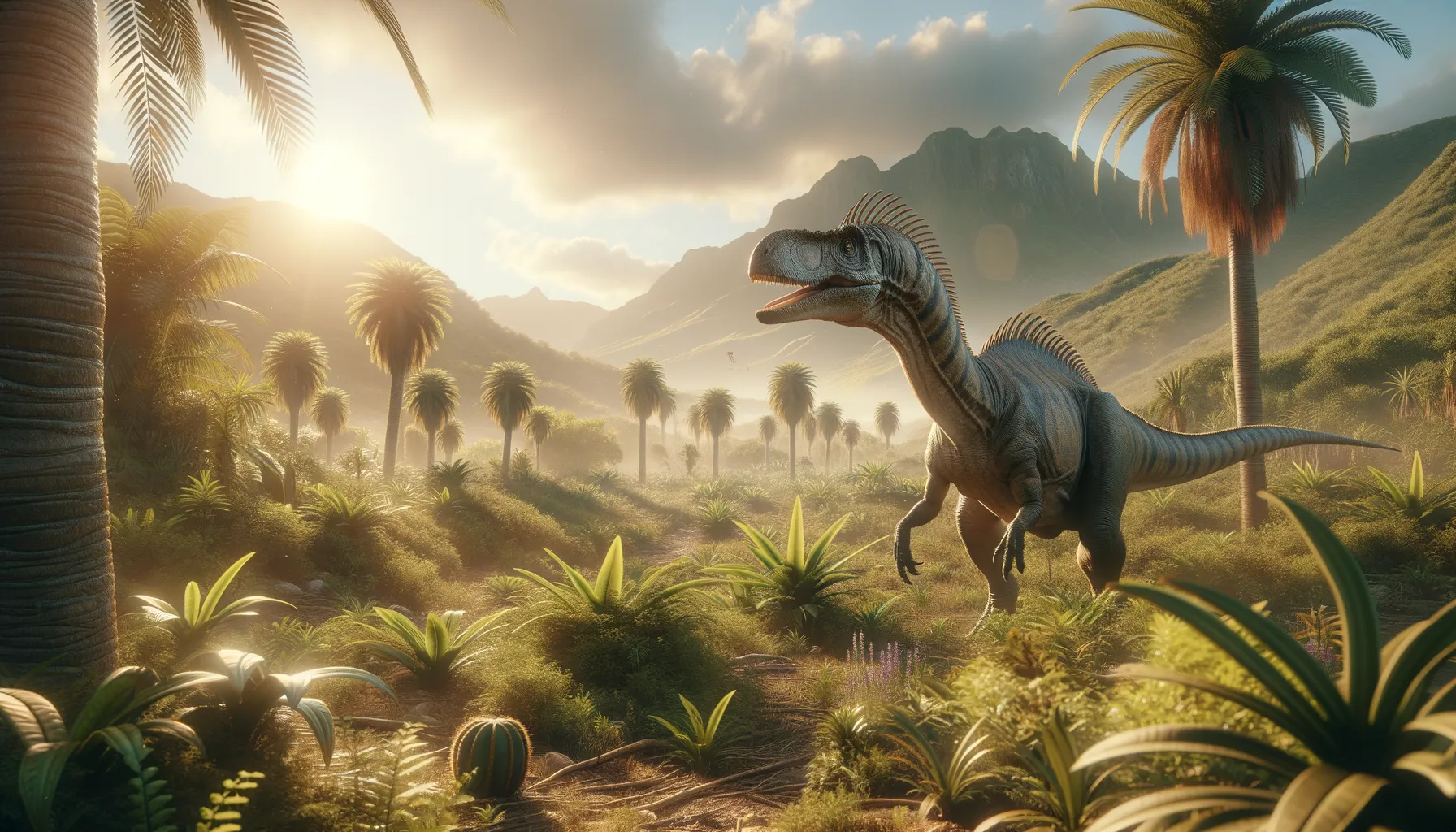
Arenysaurus
The humble giant of ancient Europe.
Period
Cretaceous
Length
Measured up to 8 meters long.
Height
Stood around 3 meters tall.
Weight
Approximately 2 to 3 tons.
Arenysaurus was a herbivorous dinosaur from the Late Cretaceous period, primarily found in what is now Spain. It belonged to the hadrosaur family, known for its duck-billed appearance. It played a crucial role in understanding the paleobiogeography of the European region during its time. This dinosaur was one of the last surviving members of its kind before the mass extinction that ended the era of the dinosaurs.
Diet
As a herbivore, Arenysaurus primarily fed on a variety of plants and vegetation. Its diet likely included leaves, fruits, and possibly conifer branches found in its environment.
Hunting
Being a herbivore, Arenysaurus did not hunt but foraged for food. Its feeding behavior involved grazing and plucking plants with its beaked mouth.
Environmental challenges
Arenysaurus faced challenges such as climatic changes and fluctuations in available plant resources. It lived towards the end of the Cretaceous period when environments were becoming increasingly unstable due to volcanic activity and other factors. This instability may have impacted its food sources, requiring adaptability in its diet. Moreover, competition with other herbivorous species could have posed a challenge in securing sufficient food.
Speed
Arenysaurus was relatively slow, moving at a leisurely pace.
Lifespan
It likely lived for about 20 to 30 years.
First discovery
Discovered in the late twentieth century in Spain.
Fun Facts
- Arenysaurus was a type of dinosaur known as a hadrosaur, which are often called 'duck-billed dinosaurs' because of their flat, broad snouts.
- This dinosaur lived during the late Cretaceous period, around 66 million years ago, just before the dinosaurs went extinct.
- Arenysaurus fossils were discovered in Spain, making it one of the few dinosaurs from the Iberian Peninsula.
- It was a herbivore, meaning Arenysaurus primarily fed on plants, using its specialized teeth to grind up tough vegetation.
- Arenysaurus had a distinctive bony crest on its skull, which may have been used for display or communication among its kind.
- The discovery of Arenysaurus helped scientists understand more about the diversity of dinosaurs in Europe during the Late Cretaceous.
- Arenysaurus is one of the last known hadrosaurs, living close to the time of the mass extinction that ended the reign of dinosaurs.
Growth and Development
Arenysaurus likely hatched from eggs laid in nests, common among hadrosaurs. Juveniles would grow rapidly to reach their adult size, which provided them an advantage in evading predators. The growth rate was believed to be relatively fast to ensure survival in their challenging environments. As they grew, they developed strong legs and a robust body to support their size and weight.
Habitat
Arenysaurus inhabited lush, forested regions with abundant vegetation. It thrived in environments with rivers or lakes, providing ample hydration and plant life. This dinosaur preferred lowland areas where food was readily available. The climate was relatively temperate, supporting diverse plant species crucial for its diet.
Interaction with other species
Arenysaurus coexisted with other hadrosaurs and various herbivores, often competing for the same food resources. They may have engaged in social behaviors typical of herbivorous dinosaurs, such as moving in herds for protection. Predatory threats came from theropods which shared their environment, prompting defensive behaviors. The presence of diverse species influenced Arenysaurus's need for social structures and communication within its groups.
Natural lifespan
Its natural lifespan was around 20 to 30 years.
Reproduction
Arenysaurus reproduced by laying eggs in carefully constructed nests. Females would choose secluded or strategically safe locations to ensure the protection of their offspring. Incubation periods were relatively short, allowing young to hatch and quickly grow. Parental care behavior might have been exhibited, ensuring higher survival rates of the young.
Social behaviour
Arenysaurus likely lived in communal groups or herds, offering protection against predators. Social behavior included communication through vocalizations or visual displays facilitated by potential crests. Within these groups, they maintained hierarchies that directed movement and foraging strategies. Being social creatures helped them adapt and thrive in varied and sometimes challenging environments.
Fossil locations
Fossils of Arenysaurus have been primarily found in the Iberian Peninsula, specifically northern Spain. The region has yielded significant remains, contributing to the understanding of its lifestyle and ecology. These discoveries have emphasized the diversity of late Cretaceous terrestrial ecosystems in Europe. The fossils provide insights into its morphology and potential behaviors in its natural habitat.
